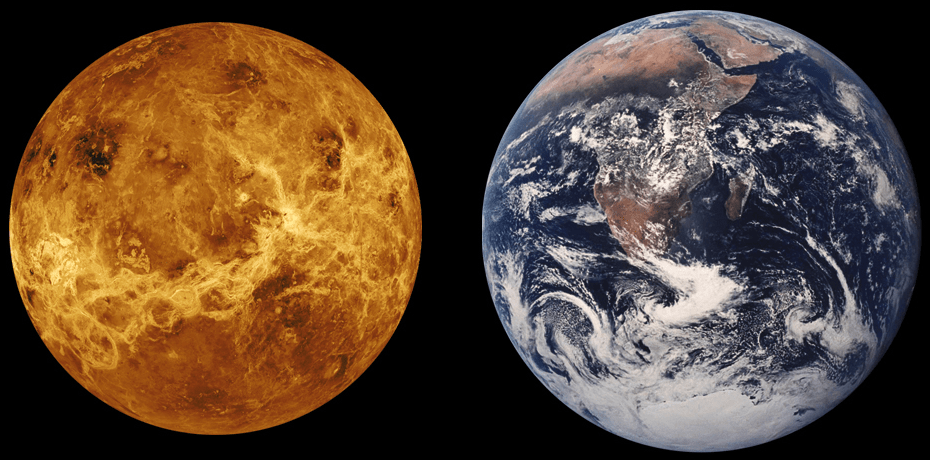[/caption] The radius of Venus is 6,052 km. Double that and you get the
- diameter of Venus
-
12,104 km.
Need some comparison? The equatorial radius of Earth is 6,378 km, so the radius of Venus is 95% the
Earth's radius
. With such a similar size, you can see why Venus is considered Earth's twin planet (evil twin, really, when you consider it's hot enough at the surface to melt lead, with an atmosphere 92 times as thick as Earth).
With other planets in the Solar System, we talk about their equatorial and polar radii. That's because most planets are rotating on their axis so quickly they're a little flattened out, with a bulge around the equator. For example, here on Earth, points at the equator are actually 7 km further from the center of the Earth than the poles.
Venus, on the other hand rotates so slowly on its axis that it isn't flattened out at all. While Earth takes 24 hours to complete one rotation, Venus takes 243 days to spin once on its axis (it also rotates backwards compared to the other planets in the Solar System, but that's another story).
So the radius of Venus is 6,052 km, whether you calculate it from the center to the equator, or the center to the poles.
Want to know the radius of other planets? Here's an article about the
radius of Mercury
, and here's an article about the
radius of the Moon
.
Want more information on Venus? Here's a link to
Hubblesite's News Releases about Venus
, and here's
NASA's Solar System Exploration Guide
to Venus.
We have also recorded a whole episode of Astronomy Cast that's just about planet Venus. Listen to it here,
Episode 50: Venus
.
 Universe Today
Universe Today
